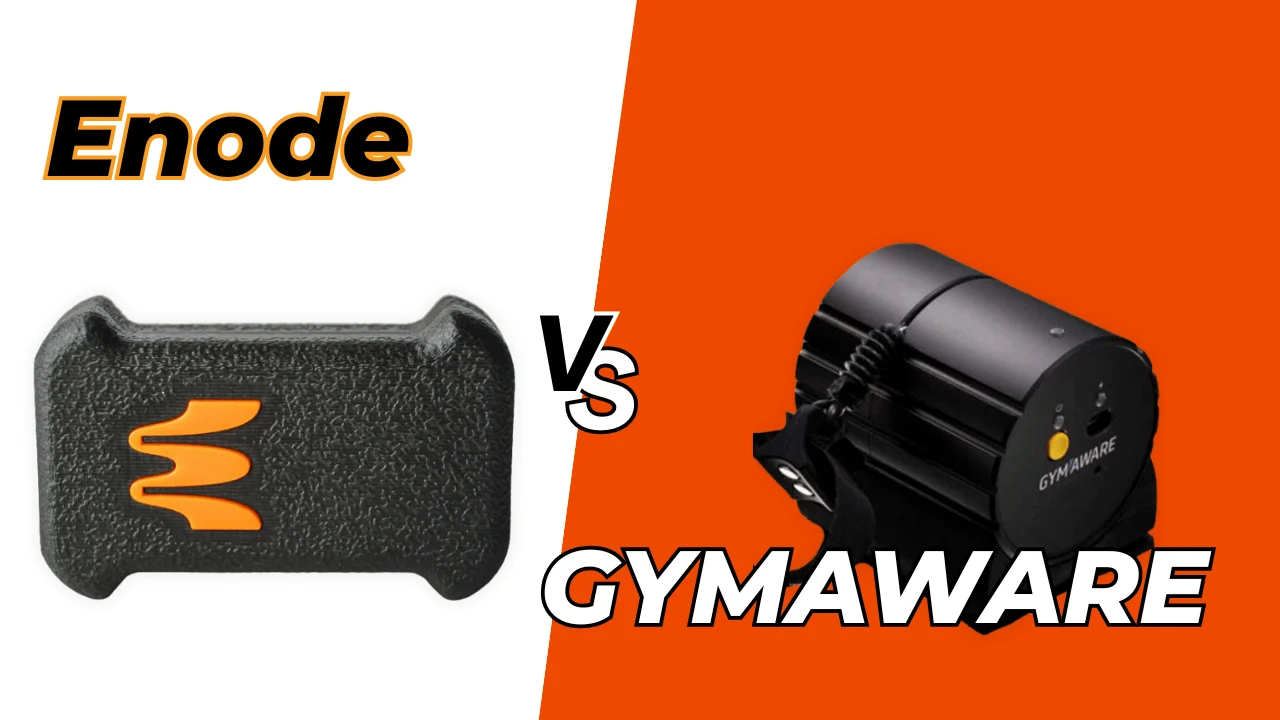[mashshare]

The era of sports science in the world of competitive team sports is just getting started, but the movement’s technological underpinnings are beginning to settle. Motion sensors and computer vision track athletes movement patterns and force production. New platforms for chemical sensors tell more and more about athletes’ physiological makeup. And the simple, everpresent questionnaires, anthropometric measures, weigh-ins and heart rate calculations have proven value. All of that data gets funneled into computer interfaces, and sports management moves irreversibly towards evidence- and analytics-based decision-making.
Teams will prioritize some data and ignore others. They will emphasize some results and downplay others. And they will be ready, or not, for the next-generation of sports science tech to come on-line. Those choices, for better or worse, are becoming a sports organization’s recipe for athlete performance, the secret sauce of their team’s won-lost record.
One core piece of emerging sports science technology is Athlete Management System (AMS) software (like CoachMePlus). Think of it as a scaffold for teams to build their sports science programs and their secret sauce. The increasing adoption of these software platforms speaks to the value they have for teams, but heads up, these are new products in a relatively new market.
The newness of AMS’ products has implications for customers, namely:
- These products will change, evolve and improve.
- A community of technically-minded AMS users will emerge, connect, and in time, grow to define itself.
- AMS’ technical advances will lead to users’ (and teams’) innovations in workflow, analysis, and tactics as the product developers and the community make progress toward interface and usability standards.
Culture and community are forms of collaboration. (So are sales, software development, and transition defense.) Successful collaboration defines teams’ success. And collaboration will be critical to shape how teams take to an athlete management system and make it into something valuable, now and in the future.
Understanding the Athlete Management System
It’s best to know how to walk before you learn how to run. Progressions are essential for athletes’ development. And no surprise, there’s a progression for moving through the learning curve of sports science collaboration and AMS adoption.
Team sports at every level benefit from measuring athletes’ performance systematically. The decision to begin measuring starts an organization down the path of applied sports science. More sports science decisions follow, and a big one is whether to purchase and use an athlete management system or to stick with a custom solution, often assembled from Excel spreadsheets or custom databases. Either way, AMS or no AMS, the data collected and the interfaces for the athlete data are going to be as much a part of the makeup of that team as any staff member, any trainer, any player, any coach.
The athlete performance data and interfaces are an opportunity for competitive advantage; together they are the secret sauce teams use to assess talent, develop players and, ultimately, win games. The measurement technologies, in practice and from vendors, are often new and, in some cases, still emerging — biomarkers, sleep, FMS, player tracking, force plates, RPE, questionnaires, Catapult, and Omegawave.
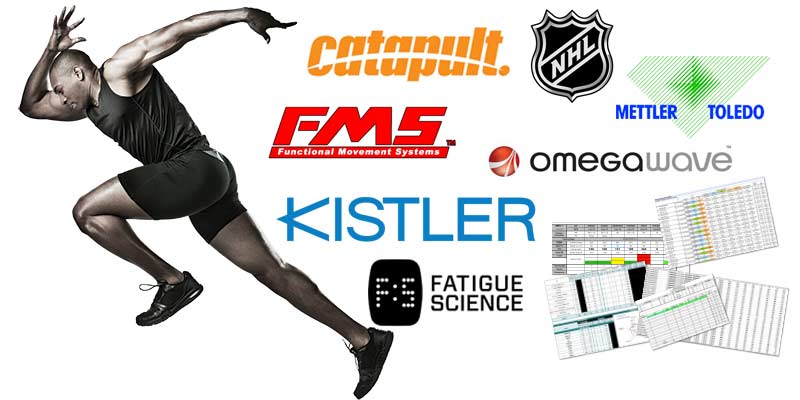
AMS software, like CoachMePlus, is, by necessity, opinionated software. It’s software with a vision and an approach for how best to get work done. CoachMePlus’ vision and approach come from the best practices of applied sports science. (Also, the opinionated-ness is not a lack of flexibility or control for users; users have both. Lots of both in fact.)
If you use Microsoft Excel or something else custom (and less opinionated) to manage athlete performance, you are in complete control of the data, it’s input, output, and management. You are the developer and the user, and out of necessity, you make lots of data management and presentation decisions. Excel is not opinionated software, and it creates more work.
Most times the decisions that get built into the user interface involve steering a user through the tasks that software has been built to help with. “Software requirements” are what software developers call these task definitions that, once built, are important elements of the software’s services. Tasks that are not defined well enough to be included in requirements documentation will not get designed into the user interface, and determining requirements is the crucial early step for building useful digital tools and services.
Having an already-built, commercial AMS helps a team to avoid starting its applied sports science program with a completely blank slate. Fill in the forms and click buttons on whatever starter template to get to a useful place with the technology. But work remains to go from starting out with the basics to making an AMS into something that reflects a team’s approach to sports science.
There can be significant advantages to going without an AMS though. The legwork in using Excel, or even paper, to manage athletes health and performance creates a useful, hands-on, personal relationship with athletes’ data. Manually entering data can be an effective, practical way to see athletes’ patterns. It is also time-consuming, sometimes to the point of being impractical for taking lots of measurements and for managing larger numbers of athletes.
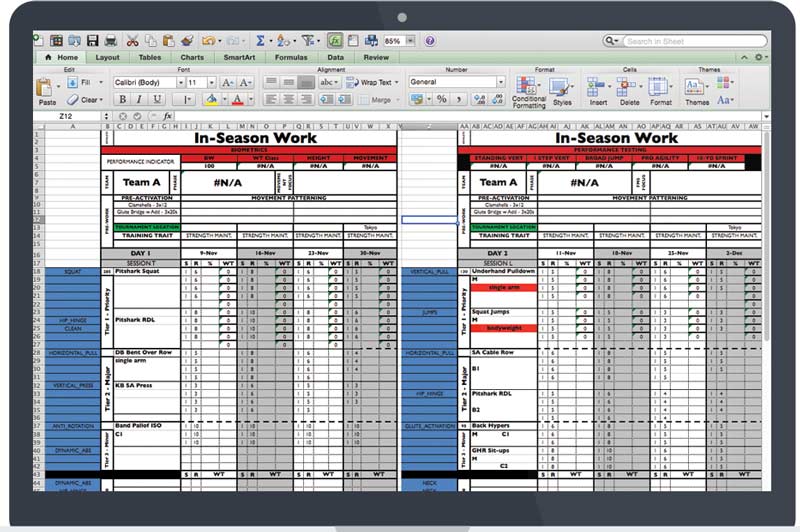
An AMS might be necessary, but it’s important to understand what it means to surrender some degree of control to an opinionated technology. It’s also important to understand what you as a software customer can do to influence, evolve and improve opinionated technology.
A team can guarantee that its data systems evolve according to its needs by developing its own systems, but the team that goes with a commercial AMS needs to remain aware of how changes in data can lead to workflow changes that might call for changes in the user interface. The task definitions that are scoped out as requirements can be inaccurate, imprecise or fail to keep up with users’ needs. It helps to remember that sports science is a young discipline, and the technologies are new.
The inability to make sense of the data takes time away from coaching, training and otherwise helping athletes. The situation is a user interface failure. Like so many efforts that do not succeed it is also a learning opportunity, a chance to examine what’s happened, apply the lessons and make progress.
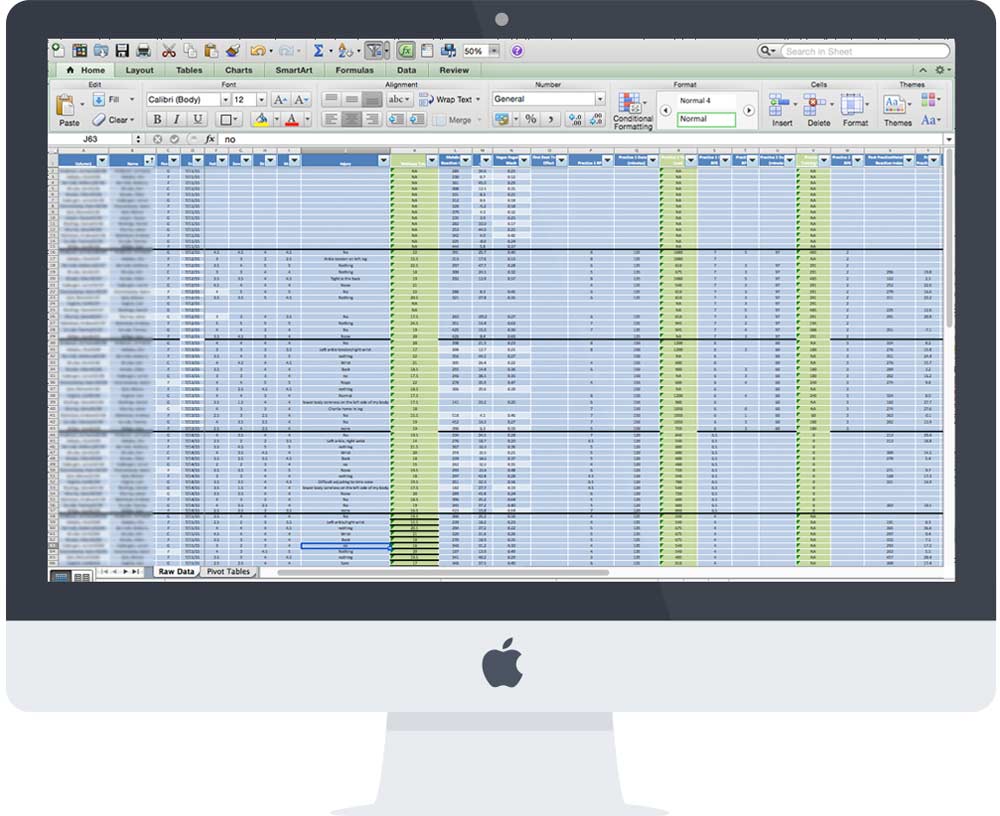
Software tends to work better when the task and the analysis are well-defined. Technology gets better as developers, designers, and engineers improve their understanding of how it should be used. Requirements that start off murky eventually become clear.
“Design Patterns” are what often maps the requirements for a user task to its implementation in a software interface. Design patterns also provide a helpful way to understand how good software takes advantage of modular components that work together. One design pattern is a reusable solution to a specific problem, like the easy solution to gathering health data by assigning clickable zones to a simple representation of the body. Good software is built component by component, where each component does its job, much like what coaches ask for from players. Design patterns provide a common language and helpful shortcut to bridge what users need from software to the code that helps do those tasks.
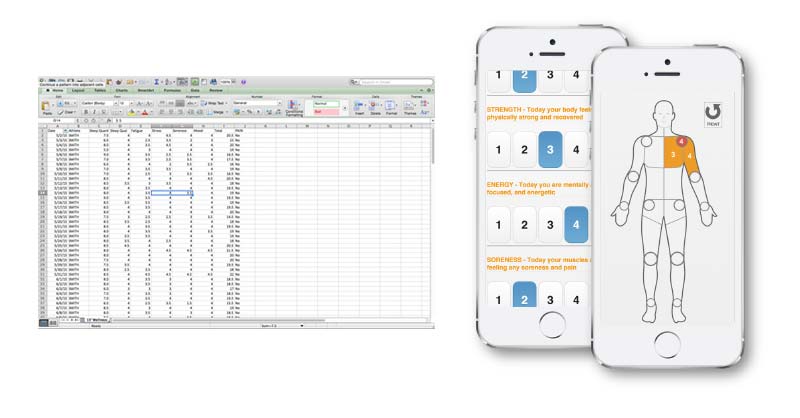
More than with any other task, an AMS shines when asked to provide an overview, helping busy users see the big picture on a dashboard: that athletes are thriving, who might be injured, what practice patterns seem to get the desired results.
Stephen Few, a noted information design consultant, has articulated what makes for good dashboard design, “Visual monitoring involves a series of sequential steps that the dashboard should be designed to support.”
- The user should begin by getting an overview of what’s going on and quickly identifying what needs attention.
- Next, the user should look more closely at each of those areas that need attention to be able to understand them well enough to determine if something should be done about them.
- Lastly, if additional details are needed to complete the user’s understanding before deciding how to respond, the dashboard should serve as a seamless launch pad to that information.
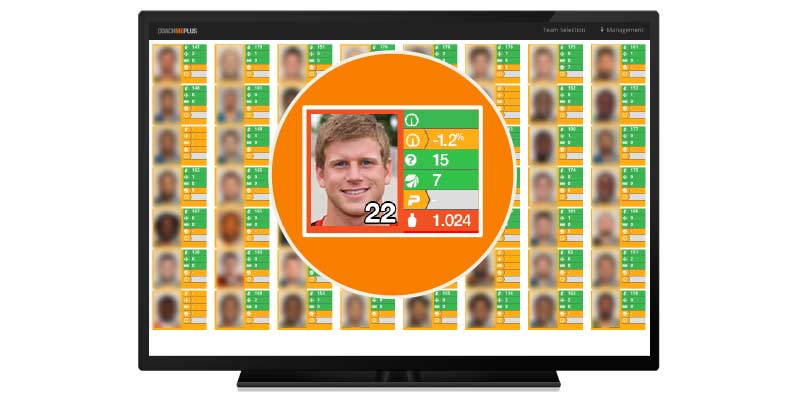
It’s here, at the dashboard, that the AMS and the team using it have to be in sync. Software for athlete performance is going to incorporate a wide range of data inputs: weight, body composition, hydration, questionnaires, velocity-based training, sleep, nutrition, blood markers, fitness tests, movement screens, heart rate, heart rate variability, athlete tracking, readiness monitoring, load, video analysis and game analytics. The dashboard needs to reflect the priorities of the team, or it isn’t putting users’ attention where it should go.
Applied sports science depends on an effective athlete management system that has to do two very different things at the same time. It has to value the simple presentation of good dashboard design. And it has to capture the complexity of all the different facets of athlete performance. The tension to maintain simplicity while also adding new complex features is another fundamental consideration of user-center design.
The tension between design simplicity and feature complexity is likely always to be an issue for athlete management systems. New sensors and data sources continue to be invented. Teams are adding sports science personnel who bring a range of backgrounds and place new demands on the software. If you agree that AMS is opinionated software, you will want to pay attention to how an AMS is set to evolve on these fronts in the future.
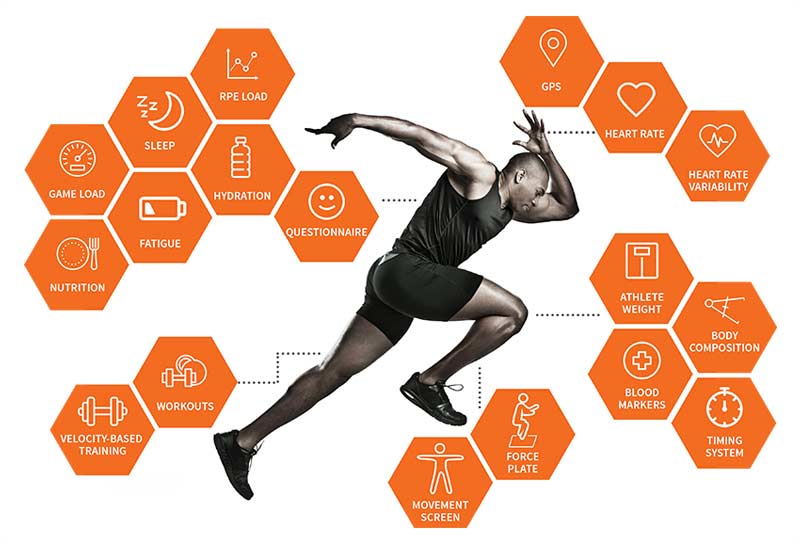
In addition to the tension between simplicity and new features, supporting collaboration among users is another design dimension that will shape the future of the AMS. Collaboration plays a role in turning information into actionable insights that will improve athletes and teams, and in using the evidence at hand for organization decision-making about players.
Authorities on effective collaboration point to the “shared artifact” as the thing that everyone has in common and which provides a single frame of reference for the group discussion. An AMS can be the shared artifact for all of the different stakeholders in a sports organization that helps them work together.
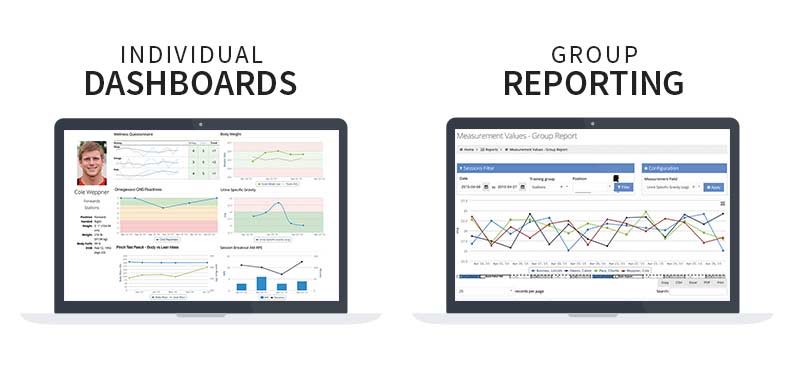
This is the AMS progression for doing sports science:
- Start by simply entering data.
- Do basic analysis.
- Develop a unified dashboard.
- Incorporate a wider range of sports science data inputs.
- Increase the complexity of the data interface.
- Ultimately make the AMS a tool for collaboration.
- A progression, yes. An easy progression, no.
Advocacy, Customers and the Future of Athlete Management Systems
The goal for CoachMePlus (and our product development roadmap) has us getting more flexible and more collaborative as the product evolves. Inside our organization we are building out the APIs, data modeling tools and dashboard functionality for our internal product teams, These are the technical tools that will improve our internal collaboration, setting us up to work better with our customers and partners.
Already, customers can call with an idea they want to try and our tools enable less than a 24-hour turnaround. Eventually, the APIs, modeling tools, and dashboards should become self-service interfaces for teams to take greater ownership of how they use their data and which will help teams to extract maximum value of athletes’ data.
There are many pathways to realizing potential; it’s true for athletes, and it’s true for technology. Each athlete management system is going to have unique elements for the team operating it. If the team has someone whose job is to administer the AMS, all of the ongoing change in sports science is going to make for challenges.
High up on the list of challenges is the way an AMS administrator has to represent all of the different stakeholders and be an advocate for athletes, coaches, clinicians, trainers and team management as he or she guides the evolution of the AMS and the workflows a team uses with the AMS. The point: It’s not enough to simply passively administer the team AMS, not when these products are set to evolve rapidly, even within the timeframe of a team’s season.
AMS administrators are advocates when it comes to working with CoachMePlus or any of the developers of the technology. Administrators are the voice of their team’s otherwise voiceless stakeholders who benefit from the technology. The better those team-side communication channels are working, the more aware AMS administrators are of their needs when they have their conversations with their technology partners.
Teams that make the most out of sports science will need to make the most of their athlete management system, and that will be difficult for teams that choose to be passive participants in AMS evolution.
Ultimately teams will get the AMS they deserve, based on how much they participate in moving the technology forward. In time, there will be communities of practice for applied sports science technology, but until that day arrives, the quality of the tools depends on the quality of the collaboration on teams, between teams and technology providers, and among everyone who comes together in the nascent community of sports science technology developers.
Participation is not mandatory and karma is not guaranteed. But please share so that you and your peers in the present and the future may benefit.
[mashshare]


